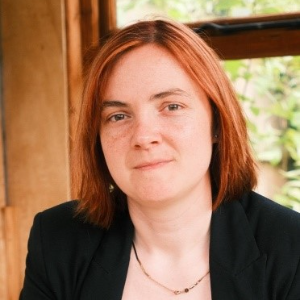Title : Multi-omics workflow for the identification of discriminant markers associated with Trypanosoma cruzi populations
Abstract:
Introduction: Trypanosoma cruzi (T. cruzi) is a protozoan parasite that causes Chagas disease. This zoonotic disease is transmitted to human by blood-sucking triatomine bugs. According to WHO, Chagas disease is affecting 30 000 new cases and is causing 13 000 deaths per year mainly in Mexico, Central and South America. The life cycle of T. cruzi implies a differentiation of non-infective to infective forms within the triatomine gastrointestinal tract and an intracellular progression of T. cruzi infection in human. After surviving the acute stage, patients progress in a large part to an asymptomatic chronic infection. In around 30-40% of the cases, they can progress towards further complications such as cardiomyopathy and gastrointestinal tract mega syndrome. Currently, knowledge limitations of the mechanistic processes associated with the persistence of T. cruzi compromise the development of improved treatments for Chagas disease.
To improve the understanding of Chagas disease, two populations (replicating epimastigotes and replicating amastigotes) have been isolated. An integrated proteome and transcriptome profiling method has been performed to identify discriminant markers/pathways associated with the stage of infection.
Material & Methods: Intracellular amastigotes can be isolated by repeated passage of infected host cells through a syringe needle. This is a rapid procedure but with safety issues. Fluorescently tagged amastigotes can be further sorted using an Aria BD cell sorter. This technique achieves a higher purity with a lower yield and can be time-consuming. Cells were inactivated with a nonionic detergent (Cell Disruption Buffer, PARIS kit - Thermo) and frozen until preparation. Samples were then divided in two for parallel proteomic and transcriptomic analysis.
Results: A clear separation of amastigote and epimastigote populations was observed for both the transcriptome and the proteome profiles. An additional separation of the amastigote populations was observed for both techniques. This separation could be explained by the difference of infection stages between the replicates (optimization of the isolation procedure). A higher number of down regulated genes and proteins was observed in amastigotes compared to epimastigotes. An off/on pattern of protein expression was observed mainly in amastigotes (590 proteins were absent in amastigotes and present in epimastigotes).
Conclusion: A robust method was developed to explore the transcriptomic and proteomic profiles of diverse parasite populations from a single sample. The observed distinction in transcriptomic and proteomic profiles of amastigotes and epimastigotes might be explained by their intracellular or extracellular states, respectively. Identification of differentially expressed genes and proteins between populations will further allow to select discriminant markers/pathways. The ability to sort different amastigote sub-populations, will be of interest to isolate “dormant/quiescent” parasites that may have a role in treatment failure. Low input and/or single-cell approaches are needed to deeply investigate these relevant populations.



